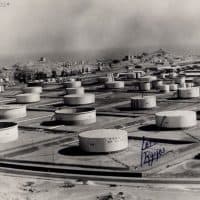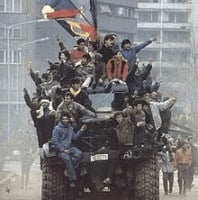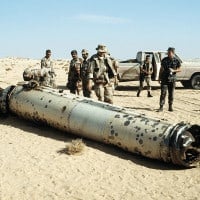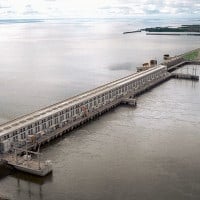For many Latin American states, expropriation has been a hammer in the toolbox of land or labor reform. For the United States, expropriation has been a thorn in the side of its companies’ profitable operations in the region—and, therefore, a threat to its interests. This conflict has played out many times throughout the region. In… Read More "An Expropriation Saga in Peru"
September 11, 2001 marked one of the worst ever terror attacks on American soil. Two hijacked planes crashed into and destroyed the World Trade Center’s Twin Towers, one crashed into the Pentagon, and one crashed in rural Pennsylvania. Nearly 3,000 people were killed, 8,900 were injured, and thousands more were left traumatized after experiencing the… Read More "9/11 Terror Attacks: A Consular Officer’s Perspective on Visas and Government Intelligence"
They were doctors, professors, and, in some cases, even peasants. The one thing they all had in common, however, was the desire to flee communist Romania for America and being “just miserable” because of it. Thanks to the efforts of two people at the U.S. Embassy in Bucharest, “The Miserables” found a voice in the… Read More "From Les Misérables to Good Americans: One Ambassador’s Fight to Secure Refugee Status for Romanian Dissidents"
For women in the 1990s, Kenya was a difficult place to live. For those who came from wealthier families and could afford education, they sometimes had the resources to do great things, from simply living independently to even winning the Nobel Peace Prize as Wangari Mathai did in 2004. Unfortunately, however, poverty, lack of resources,… Read More "Effects of Poverty on Women’s Rights in 1990s Kenya"
Following the 1990–1991 Gulf War, the United Nations wanted to prevent any further aggression, and feared that Iraq had developed nuclear weapons of mass destruction. The rest of the world could only imagine the level of mass destruction and carnage that would result if Iraq decided to use such weapons. As a result, the United… Read More "Iraq’s Weapons of Mass Destruction: Establishment of the United Nations Special Commission"
At the end of World War II, Argentina was entrenched in debt and on the verge of defaulting to its creditors in Europe. However, in voicing its concerns to France, Argentina was able to secure a three-day meeting in Paris that would allow its debt to be restructured along a more reasonable timeline; this was… Read More "Fiscal Relief in a Tumultuous Time—The Paris Club in the Nineties"
To directly defy orders from one’s superiors undoubtedly takes nerve and, above all, conviction and belief in doing the right thing. In an organization like the Foreign Service, where each individual takes part in representing an entire country, such a dynamic is only amplified. The bureaucracy of the State Department creates a concrete hierarchy. Yet,… Read More "An Unpopular Opinion: Tex Harris and the Yacyretá Dam Project in Argentina"
Madhumita Gupta had a long and successful career serving as a Foreign Service National with the U.S. Agency for International Development (USAID). Her background and upbringing played a key role in making her the person she became. She grew up in a household that was constantly brimming with knowledge. Her father was proficient in economics… Read More "First India, Next the World: Madhumita Gupta’s Story of Determination and Drive"
Almost two years ago, SpaceX CEO Elon Musk sold the first ticket to the moon. A few months later, on January 3, 2019, a Chinese spacecraft named Chang’e 4 became the first robotic mission to land on the far side of the moon. Since then, both an Israeli ship and an Indian mission have attempted… Read More "A Gift from Nixon: A Moon Pebble for Each Head of State"
The United States’ war on Communism has crucially shaped much of our foreign policy today. Since the First Red Scare roughly a century ago, we have passed laws, fought wars, and set up international institutions—all in the name of preventing its proliferation. Whether we succeeded is a different story. In the context of the Cold… Read More "A Failure of American Ideology?—The Spread of Communism in South America and the International Sphere"










